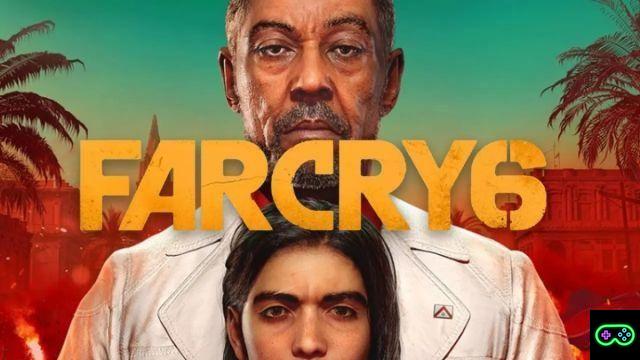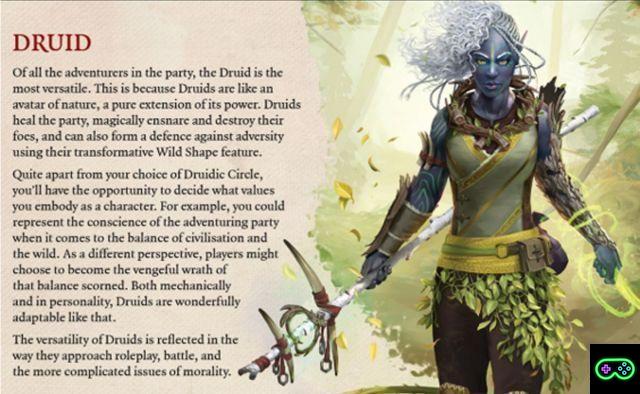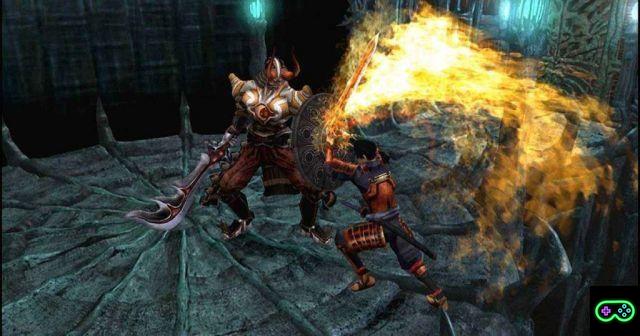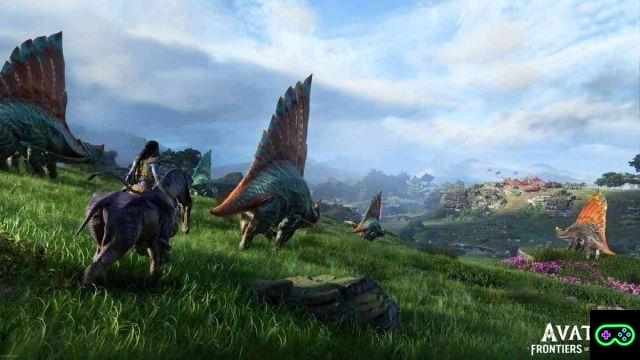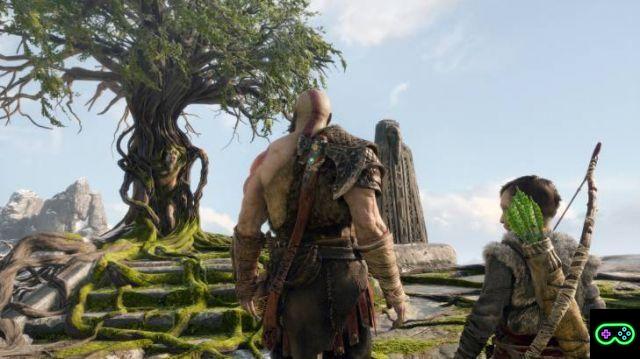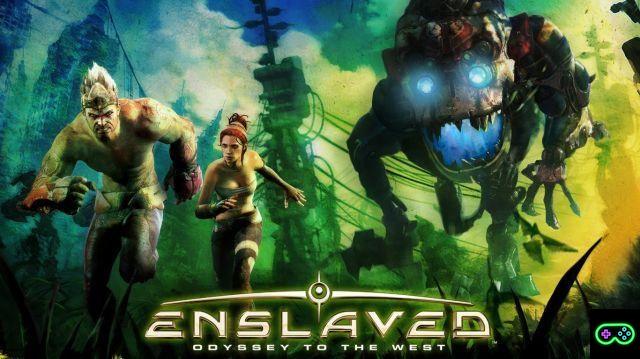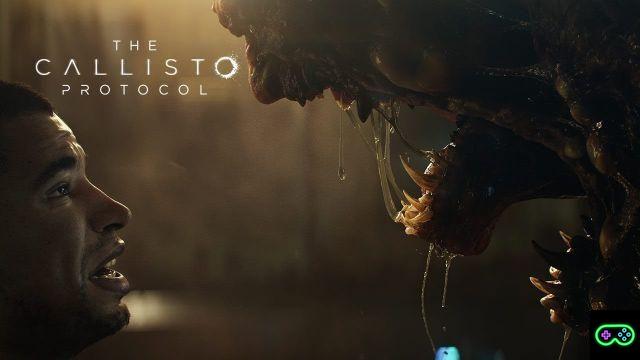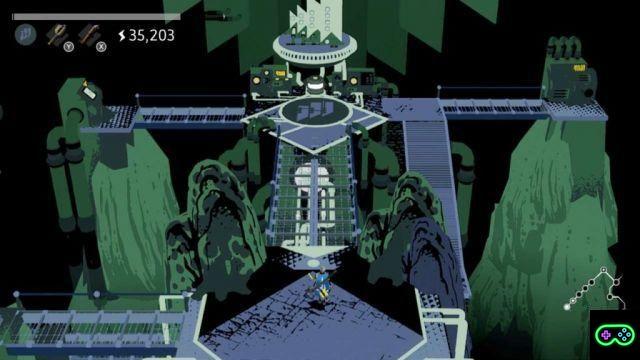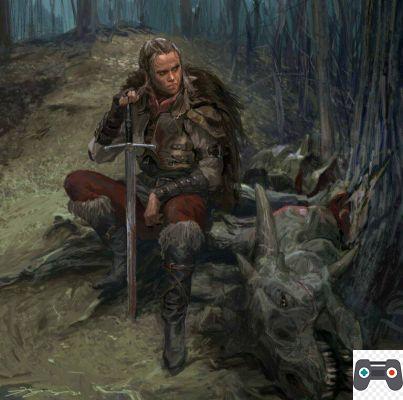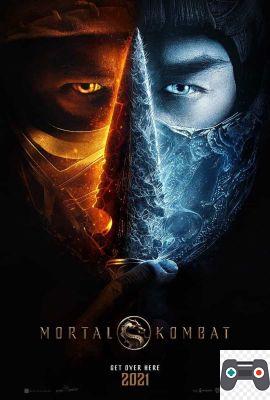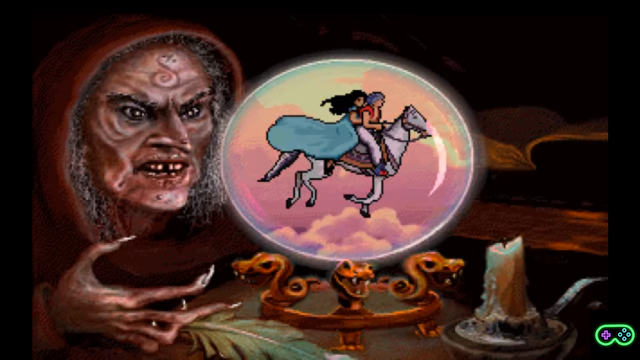With article number 41 of the rubric of the Bear's Lair, which focuses onmythological analysis di game, TV series e RPGs, we are going to close the experiment that led me to place under the magnifying glass, standard equipment of theinvestigator of the occult self-respecting, this Shin Megami Tensei: Persona 3.
It is such a title J-RPG, that is, a role-playing video games of style Japanese, which I had almost always avoided until now. Moreover SMT: Person 3 is closer to a life simulator than to a proper role-playing videogame: more The Sims and Planescape: Torment, Baldur's Gate o Knights of the Old Republic, in conclusion.
The journey was interesting, arduous and full of surprises. Let's make a brief recap before tackling the last tear before the finish line:
- in the first part we examined the Tartarus, Dark Hour, the concept of Person e The protagonist of the game;
- in the second article we focused on the first members of the SEES, Namely Specialized Extracurricular Execution Squad;
- in the third stage we concluded the examination of the elements under the SEES, and we analyzed it Strega, that is, secondary nemeses.
Now we're going to talk about gods instead primary bosses and of those optional di 3 person, starting from the latter and then concluding with a flourish. Ready, set, go.
The mythology among the main bosses of Persona 3
Between the base game and the versions EDF e Portable, 3 person offers us several optional NPCs, who play the role of advisors, quest-giver and, in some cases, that of optional bosses.
We will focus on two of them: Elizabeth e Margaret, both assistants of Igor in Velvet Room, which in a nutshell is a kind of pocket plane located between the conscious and the unconscious, in which the protagonist can manage People and even merge them together, to unlock more powerful ones.
![[The Bear's Lair] The mythology in Shin Megami Tensei: Persona 3 - vol. 4](/images/posts/f0de934660829ae1a41216fae0c2f1e5-0.jpg)
A curiosity: in the story The mask of red death (The Masque of the Red Death), scritto da Edgar Allan Poe in 1842, we find a sequence of seven rooms, which symbolize the seven stages of human life; the Velvet Room, or Velvet Room, is located just before the Death.
It is no coincidence that Velvet Room appears in the game over movie, in short.
It has also been more or less officially stated that the Velvet Room di Shin Megami Tensei refers to the lore of the TV series Twin Peaks: there we find a artificial myth, Which includes a Red Room, a Black Lodge it's a White Lodge which, again within the series, refer to the Native American mythology, In particular of Nez perce.
Elizabeth, Igor's assistant in the base game
When we visit the Velvet Room for the first time, it is Elizabeth to welcome us and begin to explain to us what kind of place we have ended up in; moreover, it is she who manages the Persona Compendium, which collects information on each Person encountered, as well as details on the mergers carried out.
![[The Bear's Lair] The mythology in Shin Megami Tensei: Persona 3 - vol. 4](/images/posts/f0de934660829ae1a41216fae0c2f1e5-1.jpg) Among secondary missions proposals from Elizabeth, there is one that consists in facing it in the optional dungeon. Yes, because she too is one person-user, plus it doesn't need a evoker to summon, but there's more: exactly like our protagonist, Elizabeth is able to summon several People, and to switch them during the fight.
Among secondary missions proposals from Elizabeth, there is one that consists in facing it in the optional dungeon. Yes, because she too is one person-user, plus it doesn't need a evoker to summon, but there's more: exactly like our protagonist, Elizabeth is able to summon several People, and to switch them during the fight.
In 3 person his Arcane è The world, symbolizing fulfillment and completion, and indeed is one of the final bosses of the game.
Surt, the black fiery scourge
Let's jump for a moment from Greek myth, so far predominant, and let's cool off with a little Scandinavian mythology: the titan with a flaming sword, summoned by Elizabeth and belonging to theArcana of the Magician, is none other than surtr, One of the Giants of Fire di Muspellsheimr, destined to set the cosmos on fire with his sword of flame.
![[The Bear's Lair] The mythology in Shin Megami Tensei: Persona 3 - vol. 4](/images/posts/f0de934660829ae1a41216fae0c2f1e5-2.jpg) From the ashes of the old world a new and perfect one will arise, populated by mortal and divine survivors, driven by Baldr and Höðr, sons of Odin, along with Magni and Modi, sons of Thor, and by another handful of gods - and above all gods - survivors. We will resume the figure of baldr if and when I decide to continue exploring the series of SMT, since we find it in Shin Megami Tensei IV, released in 2013.
From the ashes of the old world a new and perfect one will arise, populated by mortal and divine survivors, driven by Baldr and Höðr, sons of Odin, along with Magni and Modi, sons of Thor, and by another handful of gods - and above all gods - survivors. We will resume the figure of baldr if and when I decide to continue exploring the series of SMT, since we find it in Shin Megami Tensei IV, released in 2013.
Anyway we already talked about it when we looked at the mythology of God of War 4 (2018), if you remember; the figure of surtrmoreover, it inspired that of Balrog named Flame of Udùn, or Durin's scourge for the Dwarves - who, we repeat, are superior to the Elves in every respect! -, as well as one of my favorite albums of Amon Amarth, entitled Surtur Rising.
![[The Bear's Lair] The mythology in Shin Megami Tensei: Persona 3 - vol. 4](/images/posts/f0de934660829ae1a41216fae0c2f1e5-3.jpg)
Thor, for friends Lebowski
We still remain in the field Norse, because one of the People di Elizabeth is nothing less than Thor, the god of thunder, lightning and storms and, in all likelihood, tutelary deity of Marvel Cinematic Universe.
![[The Bear's Lair] The mythology in Shin Megami Tensei: Persona 3 - vol. 4](/images/posts/f0de934660829ae1a41216fae0c2f1e5-4.jpg) Indeed red hair, despite the long blond hair with which we are used to seeing him, the bearded son of Odinn and husband of Sif in short, he has always been one of the most loved and known gods. It will be because he considered it the protector of humanity, or because in theHigh Middle age it was seen as a bulwark against forced evangelization of Scandinavia, the fact is that Thor and magical items related to him are present in most of the media that we adore: videogames, role-playing games, films, TV series and comics, not necessarily in that order.
Indeed red hair, despite the long blond hair with which we are used to seeing him, the bearded son of Odinn and husband of Sif in short, he has always been one of the most loved and known gods. It will be because he considered it the protector of humanity, or because in theHigh Middle age it was seen as a bulwark against forced evangelization of Scandinavia, the fact is that Thor and magical items related to him are present in most of the media that we adore: videogames, role-playing games, films, TV series and comics, not necessarily in that order.
For example in the setting module per D&D 5E that I have been able to review lately, Journey to Ragnarok, we find not only the iconic hammer Mjollnir, but also called iron gloves Iron grip and the magic belt Main action, which allow him to fight with the powerful hammer despite this having a shorter handle than it should, due to a nice prank than usual Loki.
Even in 3 person we can create either Mjollnir both a magical couple lightning gloves, almost certainly a reference to gloves Iron grip. However, in the Scandinavian mythology Sara Thor to contend with the serpent of the world, Jörmungandr: will manage to mate it, but the poison of the Miðgarðsormr it will make him fall to the ground, dead, after only nine steps.
![[The Bear's Lair] The mythology in Shin Megami Tensei: Persona 3 - vol. 4](/images/posts/f0de934660829ae1a41216fae0c2f1e5-5.jpg)
With Chulainn, the Irish Achilles
This is one of the pleasant surprises that SMT: Person 3 reserved me: I did not expect to find in the game of legendary figures unknown to most people, or in any case not famous as for example Zeus, Jupiter, Odinn and what else.
La Person call Cu Chulainn falls fully among these cases: it is the Mastiff of Culann o Cú Chulainn, that is, a hero of the Irish and Scottish mythology. The hero, who was given the unfortunate name of Cucullino in Italy, is the protagonist of the epic poem of Ulster cycle: many figures dear to gamers have been drawn from this work, such as Morrigan (Darkstalkers) is Deirdre (Fire Emblem), just to name a couple.
![[The Bear's Lair] The mythology in Shin Megami Tensei: Persona 3 - vol. 4](/images/posts/f0de934660829ae1a41216fae0c2f1e5-6.jpg)
Cú Chulainn he is famous for having single-handedly vanquished the army he intended to invade l’Ulster, above all at only 17 years old, but also for his version of theWrath of the Barbarian (rìastrad, similar to the Scandinavian berserksgangr), and to be probably related to the figure of Achilles: both heroes born from the union between gods and mortals, both dead young due to a weakness in the magical protection which safeguarded them from deadly and supernatural adversaries.
Actually the Achilles heel issue arises from the Roman myth and not from that Greco: in the incomplete poem Achilles, in fact, written by the Roman Publius Papinius Stazio, we read the famous story according to which Achilles it would have been soaked in the river Styx from his mother Teti, which wanted to make him invulnerable, and the only unprotected point was the heel from which the parent had supported the baby.
Let's take this myth for granted, and let's compare it with that of Cú Chulainn: on the destiny of this hero hung two geis or geasa, two important ones supernatural taboos that roleplayers will know how geas (fifth level spell). As long as they are respected, geasa bestow luck and power, but when they are broken ... well, game over.
![[The Bear's Lair] The mythology in Shin Megami Tensei: Persona 3 - vol. 4](/images/posts/f0de934660829ae1a41216fae0c2f1e5-7.jpg)
One of these geasa imposed upon Cú Chulainn it consisted of never eating dog meat, while the other revolved around never refusing a meal offered by a woman. Obviously, fate makes fun of us, and the Irish hero is forced to make a difficult choice when a woman offers him a meal a basis of dog meat.
The hero is found weakened, succumbs to the attacks of his enemies, and starts a chain of tragic events which will lead to the premature demise of most of the characters in the poem.
The sad story does not remind you the fallacious protection set on baldr, shattered by a simple sprig of mistletoe? We got to remember the episode thanks to God of War 4 (2018), dear readers. Do you remember? Good. Let's go further.
Jack Frost, the personification of Winter
Insisting on the Anglo-Saxon area of the Northern European myth, let's move on to Jack Frost: it is, in very poor words, the spirit of winter. It is also known as Father Winter, according to some, he occasionally collaborates with Santa Claus, probably with the minimum regime, and mainly deals with decorating the environment and villages with the signs of winter, such as flakes and blankets of snow, sticks of ice and fogged windows.
![[The Bear's Lair] The mythology in Shin Megami Tensei: Persona 3 - vol. 4](/images/posts/f0de934660829ae1a41216fae0c2f1e5-8.jpg)
Already so, as a great lover of harsh winters, it could be my favorite. But there is more: Jack Frost, In which Anglo-Saxon folklore is a friendly and good-natured sprite, actually derives from the Scandinavian Jokul Frosti, son of Kári, the Norse god of the wind, and therefore grandson of that giant Fornjót which, according to some interpretations, is none other than the primordial giant Ymir.
![[The Bear's Lair] The mythology in Shin Megami Tensei: Persona 3 - vol. 4](/images/posts/f0de934660829ae1a41216fae0c2f1e5-9.jpg)
In summary: in theOrkneyinga saga (Saga of the men of Orkney), in How Norway was built (How Norway was inhabited), and especially in the Youth story (Ynglingar saga, which was written around 1225 by the usual Snorri sturluson, and to which we have already mentioned in the past), the dear Jokul Frosti is identified with the namesake King of the Finns, which generated the personification of snow (Snær) and most of Sweden's legendary kings.
Then, for some reason, he ended up freelancing for Santa Claus, apparently participated in the American Civil War, and also went to Russia, where he is known as Grandfather Frost, who marries Vesna (spring) and begets Snow Maiden, that is, the Snow Maiden.
![[The Bear's Lair] The mythology in Shin Megami Tensei: Persona 3 - vol. 4](/images/posts/f0de934660829ae1a41216fae0c2f1e5-10.jpg)
While writing these last lines, a novel by Tom Clancy, an author who as a kid I read much more than is socially acceptable: it is EndWar, techno-thriller released in 2008, in which we find a character who is called his own Snow Maiden.
Returning to us, in some versions of the myth Snow Maiden is the granddaughter of Grandfather Frost, but by now we are used to family trees confused and not quite linear of myths and legends, right?
Pixie, cousin of fairies, goblins, elves and gnomes
Another important element of the Anglo-Saxon folklore consists of the Pixie: mischievous but benevolent fairies, dressed in rags or even semi-naked, who at night intertwine the strings of the horse's mane and, at times, enjoy making travelers go astray.
With the arrival of the Christianity, this hybrid between a fairy and an elf is transformed into thesoul of a dead infant before baptism, perhaps in syncretic fusion with i mylingar Scandinavian, similar to howler Slavs and ai Botchlings di The Witcher 3.
![[The Bear's Lair] The mythology in Shin Megami Tensei: Persona 3 - vol. 4](/images/posts/f0de934660829ae1a41216fae0c2f1e5-11.jpg) Often represented with dragonfly wings, usually of small or even tiny stature, the Pixie are part of the Little People: the fairy creatures of the Celtic tradition collectively identified as Sidhe, that is, the People of the Hills which descend from Danu, the Irish water goddess.
Often represented with dragonfly wings, usually of small or even tiny stature, the Pixie are part of the Little People: the fairy creatures of the Celtic tradition collectively identified as Sidhe, that is, the People of the Hills which descend from Danu, the Irish water goddess.
Alice: child, character, queen and divinity
Let's jump for a moment the thin fence that divides mythology from literature, and let's dive into what, of course, are the best-and most widely-known works of Lewis Carroll: yes, I'm talking about Alice's Adventures in Wonderland, and the sequel entitled Through the mirror and what Alice found there.
Inspired by Alice Pleasance Liddell, a little girl known by the ex-reverend Carroll, the figure of Alice it needs no introduction; the blonde hair and the blue dress of her equivalent in SMT: Person 3 are a direct quote from the character of Carroll, not to mention the attack called Mad Tea Party, an obvious reference to the meeting with the mad Hatter and March Hare.
![[The Bear's Lair] The mythology in Shin Megami Tensei: Persona 3 - vol. 4](/images/posts/f0de934660829ae1a41216fae0c2f1e5-12.jpg)
In the game, however, there is also space for the terrible Queen of Hearts: the attack called Die for Me! brings us back to memory playing cards who play the role of soldiers armed with spears, under the orders of Queen of Hearts and his questionable temper.
As always, however, things are not so well defined: in Demonic Compendium of the universe Shin Megami Tensei, in fact, we read that Alice it might actually be an Aryan girl (i.e., essentially, Indo-Iranian); dead as a young man, she acquired enormous magical power which drove her insane, and which prompted her to visit the naughty and capricious children to take them away with him and force them to become his friends.
![[The Bear's Lair] The mythology in Shin Megami Tensei: Persona 3 - vol. 4](/images/posts/f0de934660829ae1a41216fae0c2f1e5-13.jpg) As we have seen, the figure of Alice has sparked the imagination of many fans of the genre, including that of the user Reddit BeyondRetrospect which, in short, even goes so far as to place Alice alongside the Greek Persephone, which for the Romans it will become Proserpina: a girl kidnapped and carried in infer, where it acquires exceptional powers and becomes one day as long as it stays in that place.
As we have seen, the figure of Alice has sparked the imagination of many fans of the genre, including that of the user Reddit BeyondRetrospect which, in short, even goes so far as to place Alice alongside the Greek Persephone, which for the Romans it will become Proserpina: a girl kidnapped and carried in infer, where it acquires exceptional powers and becomes one day as long as it stays in that place.
In the same way, Alice is in a sense kidnapped by lair of the white rabbit, which plunges her into a magical kingdom near the center of the Earth, where the maiden acquires extraordinary powers and it even comes to become Queen of that fairy place, at least as long as it remains in its realm.
Metatron, the Heavenly Scribe
In the esoterica Qabbaláh Hebrew, but also in the traditional Rabbinic Judaism, the angel who plays the role of personal assistant of YHWH (God) is called Metatron; maybe you have met him thanks to the TV series Supernatural, which we have analyzed in the past, or you may have read the trilogy of These dark matters (His Dark Materials), written by Philip Pullman, including the famous novel The Golden Compass.
![[The Bear's Lair] The mythology in Shin Megami Tensei: Persona 3 - vol. 4](/images/posts/f0de934660829ae1a41216fae0c2f1e5-14.jpg) That's it Metatron, with its 36 wings, its countless mouths and its million eyes that reminds us Argo Panoptes, is not present in the Christian tradition: we find no trace of it either in the Ancient or in the New Testament. in Books of Enoch, considered apocryphal, Metatron appears to have two aspects, which apparently exist at the same time:
That's it Metatron, with its 36 wings, its countless mouths and its million eyes that reminds us Argo Panoptes, is not present in the Christian tradition: we find no trace of it either in the Ancient or in the New Testament. in Books of Enoch, considered apocryphal, Metatron appears to have two aspects, which apparently exist at the same time:
- is l 'primeval angel, who sits near the throne of God and communicates the Word to the Angels and, in some cases, to Men;
- it's the same Enoch, son of Jared and father of Methuselah, then Noah's great-grandfather: it would therefore be a man transformed into an angel.
According to the Swedish scholar Hugo Doporuergalso, the tasks and the celestial and hierarchical position of Metatron they are similar to those of the Persian and Hindu gods Mithras. Both are in close contact with the supreme figure divine, both are guarding the gods pacts and contracts, both are coated with bright light and both are guarding souls ascending to heaven. The relationship is further highlighted by the names themselves: Mithras e Metatron they are rather assonant, don't you think?
I Enochian apocryphal textsthey also highlight the role of Metatron like mediator between God and humanity, and some even go so far as to identify Metatron with the Holy Spirit. According to the Church of Jesus Christ of Latter-day Saints, that is, second and Mormons, Metatron it is above the Archangel Michael, and it is none other than Adam, consort of Eva and progenitor of humanity.
![[The Bear's Lair] The mythology in Shin Megami Tensei: Persona 3 - vol. 4](/images/posts/f0de934660829ae1a41216fae0c2f1e5-15.jpg)
Now a bit of speculation for its own sake: according to the Babylonian Talmud, sacred text of Judaism, the Celestial Scribe - that is Metatron- is associated with the Good side of Sefer-Ha-Zohar, which is thetree of knowledge of Good and Evil. In the third Book of Enochfurthermore, we read that when God transforms Enoch in Metatron, and places it beside His throne, the flesh of man becomes flame, its veins turn into The fire, and his eyes grow flaming torches.
The bond of Metatron with the The fire, knowledge e humanity, in my useless opinion, brings to mind the figure of Prometheus, which he stole fire to the gods to give it to deadly, and is intimately linked to the concept of knowledge, to the point that his very name means the one who thinks first.
Nebiros, the Marquis of Hell
The Person of Nebiros refers to a DC Comics character invented, or in any case put pen to paper for the first time, by the Dutch demonologist John Weyer, back in 1583: it is Naberius, the most powerful of the Marquesses of Hell.
![[The Bear's Lair] The mythology in Shin Megami Tensei: Persona 3 - vol. 4](/images/posts/f0de934660829ae1a41216fae0c2f1e5-16.jpg) weyer was a occultist doctor, which is the kind of individual that many of my PC gods draw inspiration from RPGs a little darker, such as Without Rest: the dear Jurgen von Engel, for example, is a Class B Doctor of IV kingdom, exceptionally carried for Occultism and demonology, and very interested in Thule Society.
weyer was a occultist doctor, which is the kind of individual that many of my PC gods draw inspiration from RPGs a little darker, such as Without Rest: the dear Jurgen von Engel, for example, is a Class B Doctor of IV kingdom, exceptionally carried for Occultism and demonology, and very interested in Thule Society.
Second John Weyer, Anyway, Naberius it makes men skilled and experienced in the arts and sciences, in particular in the oratory, Is also involved in honor and dignity, and can dispose of well 19 legions of demons.
![[The Bear's Lair] The mythology in Shin Megami Tensei: Persona 3 - vol. 4](/images/posts/f0de934660829ae1a41216fae0c2f1e5-17.jpg)
The most evident feature, however, is its physical appearance: it is a three-headed dog, with a hoarse but charming voice. It looks very similar to the Greek Cerberus, and indeed weyer considers Cerberus and Naberius the same demonic being.
In the esoteric book The Great Grimoire, Furthermore, Nebiros is a Field Marshal and Inspector General of the armies of hell, and in terms of RPG we'd say he specializes in School of Necromancy.
Masakado, the rebellious samurai
As we have already seen, Shin Megami Tensei: Persona 3 it draws not only from mythology and by Religions, but also from history properly said.
La Person di Masakado it is a tribute to a famous man samurai Japanese of the Taira clan, who lived during the Heian period (794 - 1185); led a rebellion against the central power of Kyoto, trying to conquer the three provinces of Hitachi, Kouzuke e Shimotsuke, i.e. the current prefectures of Ibaraki, Gunma e Tochigi.
Il Kyoto government mise one conspicuous size on his head, and after not even a couple of months, in the course of Battle of Kojima (Province of Shimōsa, east of Kanto, in 940), Masakado he was killed and beheaded by his cousin Taira no Sadamori, whose father had been killed by Masakado himself, and by Fujiwara no Hidesato.
![[The Bear's Lair] The mythology in Shin Megami Tensei: Persona 3 - vol. 4](/images/posts/f0de934660829ae1a41216fae0c2f1e5-18.jpg) The bounty was collected, and the head was buried in fishing village named Shibasaki. Later this village became Edo, and in 1868 its name changed again, becoming Tokyo.
The bounty was collected, and the head was buried in fishing village named Shibasaki. Later this village became Edo, and in 1868 its name changed again, becoming Tokyo.
His tomb is still present today in the district of Ōtemachi, the equivalent of the historic city center: Masakado over the centuries he became a semi-divine figure, and in fact his sepulcher - altar is found in the exclusive Tokyo financial district, a stone's throw from the Imperial Palace.
Margaret, optional Persona 3 Portable boss
In Persona 3 Portable, good ending unlocks a door on the left side of the lobby Tartarus, and there we find Margaret, which gives us missions and challenges of increasing difficulty; overcoming them all, you get the chance to challenge the same Margaret, which turns out to be one person-user like his sister Elizabeth.
She too can conjure up a multitude of People, moreover without using a Ecover, and what's more, they switch without problems during the fight. Some of her avatars, so to speak, are the same as her sister's, but others draw from mythological figures less known, in some respects. We will do just a rundown, because we are already going on even more than usual.
![[The Bear's Lair] The mythology in Shin Megami Tensei: Persona 3 - vol. 4](/images/posts/f0de934660829ae1a41216fae0c2f1e5-19.jpg) First Margaret it can summon, for example, some creatures of the Japanese and Buddhist mythology, such as the personifications of the four cardinal points:
First Margaret it can summon, for example, some creatures of the Japanese and Buddhist mythology, such as the personifications of the four cardinal points:
- Bishamonten / Vaiśravaṇa, the guardian of the North, of law and victory in battle;
- Zouchouten / Virūḍhaka, the guardian of the South;
- Koumokuten / Virūpākṣa, the protector of the West;
- Jikokuten / Dhṛtarāṣṭra, the protector of the East.
They are essentially i Four Heavenly Kings of Buddhism, which have their roots in the guardians Locapala dell 'Hinduism, and which are also present in the Chinese mythology with the name of Four Great Heavenly Kings. In the long list they also appear divine figure of Taoism, as Mao / Neko Shogun, an entity based on prophecy, and some evil spirits of Australian folklore, as Moki.
Persona 3 still draws on from Hinduism with the figure of Ardha, which refers to Ardhanarishvara, androgynous deity combining the masculine attributes of Shiva to the female ones of his wife Parvati / Shakti; from this union the whole creation is generated.
![[The Bear's Lair] The mythology in Shin Megami Tensei: Persona 3 - vol. 4](/images/posts/f0de934660829ae1a41216fae0c2f1e5-20.jpg)
There are also many elements of the Shintoism: should be mentioned Nigi Mitama, Ara Mitama, Kusi Mitama e Saki Mitama, four types or facets of that mitama which, in a nutshell, is the spirit of a Us or even the soul of a deceased; we can identify these four sides in the calm, in passion, in blessing and in the so-called wonderful soul that should be some sort of divine providence. I'm summing up in more than simple words, of course.
We also find others Us the Shintoism, as Ōkuninushi, king of magic and spirits, as well as beloved deity ofnational identity, and other historical figures transformed into legend, such as the Generale Yoshitsune of the clan Minamoto, died in 1189.
They cannot miss, however, mythological figures more mainstream and well-known, such as the Moire: Cloto, Lachesi e Atropos, the personifications of the Fact, known in Rome as Patch and in Scandinavia like Norns. We also talked about them in the previous article on 3 person, not to forget the one above God of War 2 and on the other chapters of the saga of Kratos.
![[The Bear's Lair] The mythology in Shin Megami Tensei: Persona 3 - vol. 4](/images/posts/f0de934660829ae1a41216fae0c2f1e5-21.jpg)
About Ghost of Sparta: in the last part of themythological analysis di God of War 4, dear readers, we have deepened the study of the character of Sigurðr / Sigfrido, the protagonist of the famous Saga dei Völsungar but above all ofRing of the Nibelungen di Wagner. There, too, there is talk of partial invulnerability and tricks of fate, but above all of cursed treasures, magic rings and huge greedy dragons: we have already said that we find all this in the works of J.R.R. Tolkien, Right?
Well, Siegfried also appears in 3 person, and thanks to him we get Balmung, the same sword that the hero used to bring down the dragon Fafnir, at least in the musical drama of Wagner; actually in the original Germanic epic, called The Nibelungenlied o The Song of the Nibelungs, Siegfried uses a sword called Gramr to kill Fafnir. Which actually was a dwarf, but that's another story.
![[The Bear's Lair] The mythology in Shin Megami Tensei: Persona 3 - vol. 4](/images/posts/f0de934660829ae1a41216fae0c2f1e5-22.jpg) Remaining in the field of literary and musical works: Margaret it can also evoke Oberon, the King of the Fairies and consort of the Queen of the Fairies, Titania; according to the epic poem Huon of Bordeaux, composed in the XNUMXth century, Oberon was the son of Julius Caesar and Fata Morgana. We also find this character in A Midsummer Night's Dream, known in Italy as A Midsummer Night's Dream, a comedy that William Shakespeare wrote about 1595.
Remaining in the field of literary and musical works: Margaret it can also evoke Oberon, the King of the Fairies and consort of the Queen of the Fairies, Titania; according to the epic poem Huon of Bordeaux, composed in the XNUMXth century, Oberon was the son of Julius Caesar and Fata Morgana. We also find this character in A Midsummer Night's Dream, known in Italy as A Midsummer Night's Dream, a comedy that William Shakespeare wrote about 1595.
![[The Bear's Lair] The mythology in Shin Megami Tensei: Persona 3 - vol. 4](/images/posts/f0de934660829ae1a41216fae0c2f1e5-23.jpg) An endless list of mythological figures
An endless list of mythological figures
We pulled it too long. We should also talk about Theodore / Teodor, younger brother of Margaret ed Elizabeth in Persona 3 Portable, but we will limit ourselves to naming en passant le People which it can evoke, given that they will almost certainly be well known even to the less frequent reader of this column.
![[The Bear's Lair] The mythology in Shin Megami Tensei: Persona 3 - vol. 4](/images/posts/f0de934660829ae1a41216fae0c2f1e5-24.jpg) Yeah, why Theodore, whose name literally means Gift of God, can count on the help of heavenly hosts, Including: Uriel, Gabriel, Michael, Raphael e sandalphon, that is, the main ones Arcangeli dell 'Judaism, the Christianity and medieval mystical tradition.
Yeah, why Theodore, whose name literally means Gift of God, can count on the help of heavenly hosts, Including: Uriel, Gabriel, Michael, Raphael e sandalphon, that is, the main ones Arcangeli dell 'Judaism, the Christianity and medieval mystical tradition.
In his arsenal we also find Metatron, the Celestial Scribe of whom we have already written a few paragraphs above, but also less… angelic figures, such as Lilith, Abaddon e Beelzebub.
Speaking hosts of hellin 3 person we can get too Legion, the group of demons that according to i Gospels had opted for the collective possession of a poor guy: a sort of hellish car pool in the parts of Lake Tiberias, in conclusion.
![[The Bear's Lair] The mythology in Shin Megami Tensei: Persona 3 - vol. 4](/images/posts/f0de934660829ae1a41216fae0c2f1e5-25.jpg)
Referring tomilitary unit basic ofRoman army, made up of about 6000 men, the group of demons looks like this:
"My name is Legion, because we are many."
Long story short, Jesus he exorcised the demons away, and allowed them to take refuge in the numerous bosses of a neighbor herd of pigs; the beasts, however, went mad because of the demonic possession and threw themselves into the water, kicking the bucket and probably taking with them the demons of Legion.
![[The Bear's Lair] The mythology in Shin Megami Tensei: Persona 3 - vol. 4](/images/posts/f0de934660829ae1a41216fae0c2f1e5-26.jpg)
In addition to being the inspiration for the character of One of Many, which we find in Neverwinter Nights 2: Mask of the Betrayer, and for the beloved Legion di Mass Effect, the exorcism ofpossessed of Gerasa is also an example of political satire hidden in the Gospels. Yes, because theRoman Empire had sent in Syria la Legion X Fretensis, whose banners carried the image of a boar.
Jesus triumphs over (one) Legion, who runs away in a pack of worse and they go crazy e and suicidal? Yes, it definitely is anti-Roman satire.
Last but not least, since I am currently completely absorbed by the homonymous TV series on Netflix, it must be said that in the game we also find Lucifer Morningstar, but without the inevitable Club Lux. The bearer of light refused to bow before the last divine creation, humanity, and for this he was exiled and condemned to reign over Hell.
In Shin Megami Tensei, However, Lucifer e Satan they are two distinct characters: it is not actually an error, quite the contrary. On closer inspection it is only starting from the Latin translation of Book of Isaiah, carried out already in the middle of the Christian era, that the two figures are assimilated. There is some overlap with the King of Babylon, Helel the bright, which refers to Morning Star: the Morning Star, that is, the planet Venus.
![[The Bear's Lair] The mythology in Shin Megami Tensei: Persona 3 - vol. 4](/images/posts/f0de934660829ae1a41216fae0c2f1e5-27.jpg) Even in Gospel of Peter there are various references to the Morning Star, which is not associated with Satan but indeed, in some places, it is a name even linked to the figure of Jesus. I absolutely don't want to revolutionize anything, God forbid, but it's interesting to see how early Christianity was profoundly different from today.
Even in Gospel of Peter there are various references to the Morning Star, which is not associated with Satan but indeed, in some places, it is a name even linked to the figure of Jesus. I absolutely don't want to revolutionize anything, God forbid, but it's interesting to see how early Christianity was profoundly different from today.
Be that as it may, Kazuma Kaneko, who took care of the design of the Demons / People of the game, he devised the Person di Lucifer as an entity not necessarily evil, but a tempter who can be an enemy or an ally, depending on the player's decisions. Kazuma added that sooner or later this Person will reveal its true form, a combination of all those adopted in previous chapters of the series Shin Megami Tensei.
The final bosses of SMT: Person 3
Speaking of great enemies and biblical opponents, let's now move on to the two real final bosses of the game: Nyx ed Erebus. There you go back to dive bomb in Greek myth, my dear readers.
We will start with Nyx, which it is the final boss area of basic version of the game, and then we'll move on to Erebus, which we can address in Persona 3: FES – The Answer, A kind of DLC which contains the epilogue of the game, and which in the Japanese version is called Episode Aegis.
Nyx, the Primordial Night
We come to find that Shuji Ikutsuki, the founder of SEES, fooled everyone: it led us to destroy all the major shadows, releasing each time a part of Nyx, the creator of the shadows themselves, which is destined to end the world thanks to the intervention of a so-called Appriser, translatable with Informer or perhaps Herald, that is, a Shadow of the Arcanum of Death.
I will not spoil the story, but in short this Herald offers to the SEES and the player has a difficult choice: to fail in an attempt to defeat the seemingly unbeatable Nyx, or kill the Herald himself and continue his own lives free from the memories of Tartarus and Dark Hour.
![[The Bear's Lair] The mythology in Shin Megami Tensei: Persona 3 - vol. 4](/images/posts/f0de934660829ae1a41216fae0c2f1e5-28.jpg)
La New Year's Eve, therefore, the player must decide, and here I will snatch a metaphor from Matrix:
- blue pill, end of story: we will wake up in Diploma day, and we will live on as long as Nyx it will not come to exterminate the whole of humanity;
- red pill, we'll stay in the Dark Hour and we'll see how deep the White Rabbit's lair is.
If we choose - in practice - not to shoot the Catalyst in Mass Effect 3 finale, the story will continue and we will find ourselves facing theAvatars on Nyx; it will not help much, but it will be this decision that will make us unblocked the power of friendship (!) and therefore all the power ofArcane of the Universe, symbolizing the end and a A new start, and which will eventually allow us to block the advance of Nyx and, therefore, the fall humanity.
But who is Nyx, in reality? We have already mentioned his identity, but now we will deepen the discussion. First of all we remember that, at least as regards the Hesiod's Theogony, is the daughter of Primal chaos, and it is the personification of the Night on earth.
![[The Bear's Lair] The mythology in Shin Megami Tensei: Persona 3 - vol. 4](/images/posts/f0de934660829ae1a41216fae0c2f1e5-29.jpg)
Nyx generated, without a consort, a host of daimones o personifications: the dead (Thanatos), the sleep (Hypnos), i Oneiroi (Including Morpheus), Violent Death (Ker), ineluctable Fate (Moros), revenge (Nemesis), The discord (Eris), the Moire themselves and the ferryman Charon, but also the Day (Hemera), the light (aither), perhaps Hope (The Pee) and most of the personifications of the passions and human feelings, both positive and negative.
Erebus, the night of the Underworld
Persona 3: FES – The Answer presents us with an ending that follows the end of the story of the base game, and offers us another final boss: Erebus, brother of Nyx and, according to some sources, also his consort.
Go back in time to the moment the Great Seal, that is, in the instant in which Nyx it is blocked and then stops the fall, some of the elements of the SEES they find that things turned out a little differently than expected: actually the Seal it has simply - and temporarily - severed the link between Nyx ed Erebus, the personification of negative emotions humanity.
![[The Bear's Lair] The mythology in Shin Megami Tensei: Persona 3 - vol. 4](/images/posts/f0de934660829ae1a41216fae0c2f1e5-30.jpg)
A part of human beings, it seems, craves death and oblivion; this desire takes shape in Person di Erebus, whose purpose is to contact Nyx, awaken it - despite the Seal - and activate the Fall, Then the Apocalypse and extermination of all humanity. Ahpper.
In the long run the SEES manages to defeat Erebus, with the knowledge that as long as mortals, or even a small fraction of them, crave oblivion and death, Erebus will be able to reform and eventually awaken Nyx. The team then decides to commit to change humanity, putting a stop to the urge to self destruction, To despair and negativity that grip the lives of humans.
We would also need a turning point of this kind, in this second decade of the XNUMXst century, don't you think? While we wait for it, let's move on to examine the figure of Erebus.
![[The Bear's Lair] The mythology in Shin Megami Tensei: Persona 3 - vol. 4](/images/posts/f0de934660829ae1a41216fae0c2f1e5-31.jpg)
It is the Greek Erebus, also born from Primal chaos, And then Nyx's brother; and the personification of the night of the Underworld, unlike his sister who is the night that weighs on the Earth.
From the union between Nyx ed Erebo are born there Old age, the murder, friendship, Pietà,Ira,Love, Enjoyment, Continence,Hoax and a fair plethora of personifications of natural elements, feelings, emotions and acts characteristic of those deadly fools that we are, but sometimes also gods of the which - presumably - should be wiser of their creatures.
La Tana dell'Orso returns in September!
With these deep thoughts we end the long one mythological analysis di Shin Megami Tensei: Persona 3.
After this one thirteenth Labor of Hercules / Heracles, the section of the Bear's Lair and who writes go on vacation, between events of historical re-enactment and - hopefully - a few days in the coolness of the Apennines, far from the J-RPG and, perhaps, immersed in some good old man role-playing video game old school.
Do not worry: we will meet again a September. And this can be both a promise and a threat.

![[The Bear's Lair] The mythology in Shin Megami Tensei: Persona 3 - vol. 4](/images/logo.png)


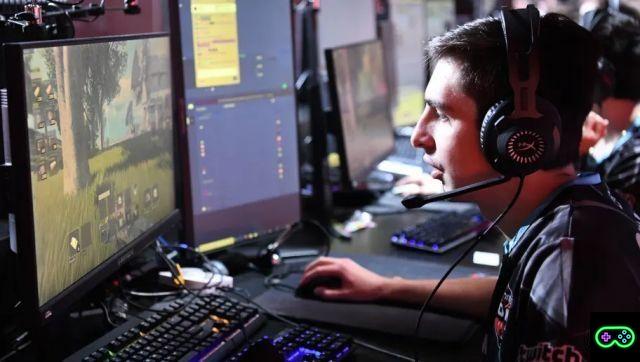
![[The Bear's Lair] God of War: Betrayal and Greek mythology](/images/posts/17432d3b12ecfec44b0b855d20c7520f-0.jpg)
